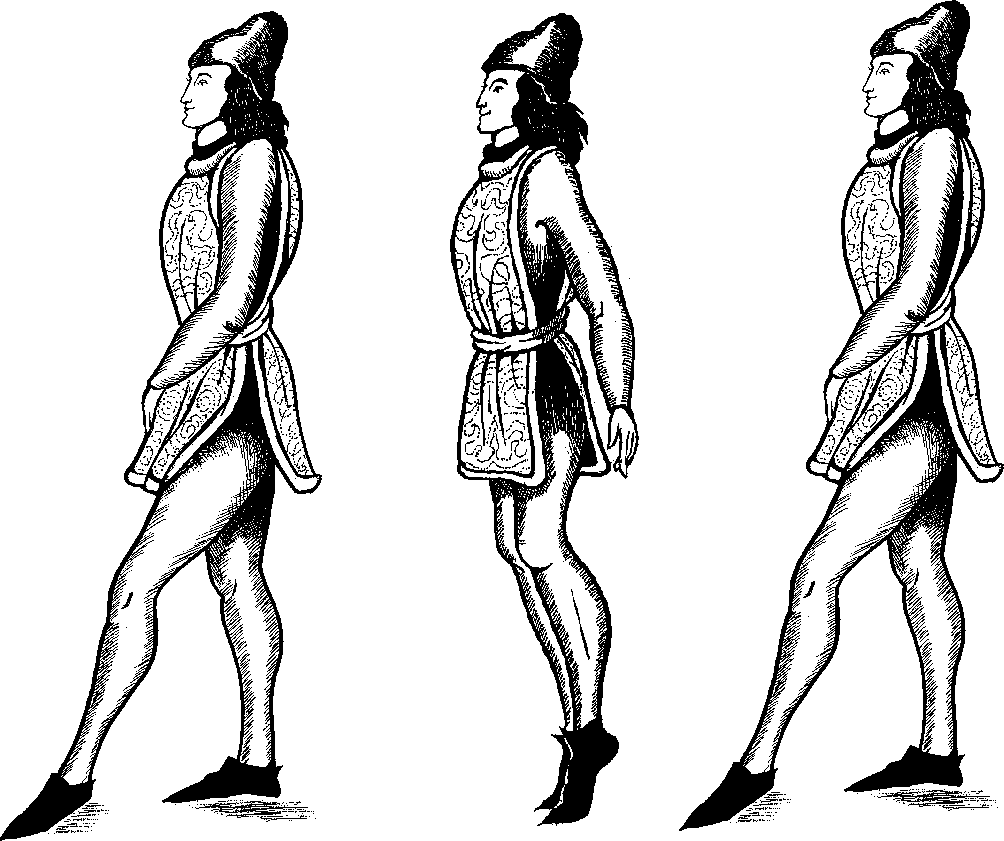PvL -- Piva (Left)
The “piva” step is the main step done in piva time. The dance descriptions of the time often say things like “do sixteen tempi of piva” which means to do sixteen piva steps in sixteen bars of piva time, the step being implied by a measure.
Here is how to do a piva step, beginning on the left foot:
Step forwards on the left foot
Step quickly forwards on the right foot, bringing the right foot either level with, slightly in front of, or slightly behind the left foot.
Step forwards again on the left foot.
Note that the above three actions are done in two beats. The second action is done quickly on the second beat, and the third step forwards happens just after the beat. The count is “ONE and TWO, ONE and TWO”, etc.
The piva step looks like a very fast doppio step, which is exactly how the manuscripts describe it to be done.
To commence the next piva step, step forwards on the right foot, past the left foot, as if starting the first step of the sequence, and continue from there.
 Every
one of the above steps is derived from a doppio. Look back at the
description of a bassadanza doppio, I have included a diagram.
Every
one of the above steps is derived from a doppio. Look back at the
description of a bassadanza doppio, I have included a diagram.